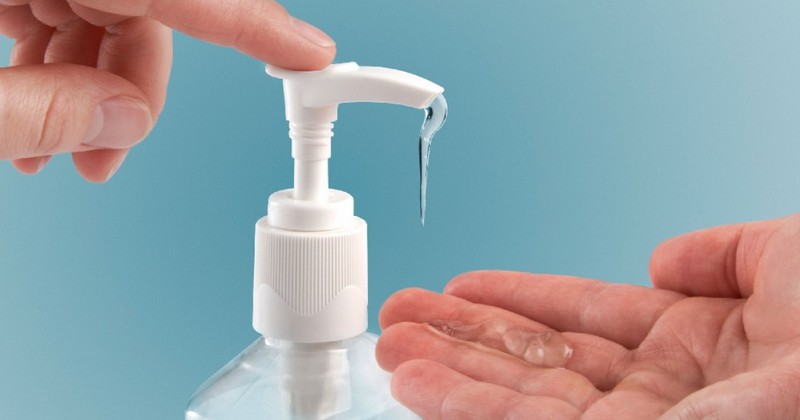Rupophobia (or misophobia): the fear of dirt and its causes

This type of OCD-related phobia is common in children of parents who are obsessive about cleanliness.
Humans can become afraid of all kinds of stimuli, from harmless animals related to others that posed a threat to our ancestors to modern means of transportation and even water or feces. We speak of phobia when the fear of any entity or situation is very intense and chronic.
The fear of dirt, which is known as "rupofobia" or "misophobia", is one of the many phobias that can be found in the world of phobias.is one of the many phobias that have been identified. Although it is not one of the most frequent, it is interesting to analyze the rupofobia by its clinical characteristics, as its relation with the obsessive-compulsive disorder and the high degree of affectation that can suppose.
Ruphophobia or misophobia: fear of dirtiness
At the diagnostic level, rupofobia falls into the category of "specific phobia" described in the DSM and ICD described in the DSM and ICD manuals. Phobias are intense and irrational fears that cause significant discomfort and/or interfere with the sufferer's normal functioning, in many cases through active avoidance of what is feared.
Specific phobias are considered anxiety disorders, such as social phobia (or social anxiety disorder) and agoraphobia. People with these problems feel great fear in the presence or anticipation of the phobic stimulus; in agoraphobia and specific phobias it is common to have anxiety attacks.
In the case of groupophobia, the phobic stimulus is dirt in a broad sense.While some people fear specific types of "dirt", such as microbes (in which case we would speak of germophobia or bacillophobia), others fear the possibility of coming into contact with anything they perceive as potentially contaminating.
Relationship with obsessive-compulsive disorder
Obsessive-compulsive disorder, often abbreviated as "OCD", is characterized by the presence of obsessive-compulsive disorder.is characterized by the presence of obsessions and/or compulsions. Obsessions are intrusive thoughts or images that provoke emotional tension, while compulsions are behavioral or cognitive rituals that are used to reduce this anxiety.
One of the most common types of obsessive-compulsive disorder is related to dirt: obsessive ideas have to do with the possibility of contaminating oneself or others, while compulsive rituals are associated with cleanliness. A typical example of a cleaning ritual is washing hands a specific number of times in a row.
In cases of overlapping symptoms of OCD and specific dirt phobia coincide, a diagnosis of OCD is often a diagnosis of obsessive-compulsive disorder usually prevails, since the rouphobia is usually a secondary symptom. However, if the irrational fear is more significant than the obsessions or compulsions, a primary diagnosis of specific phobia would be warranted.
Common symptoms
Russophobic people experience intense feelings of anxiety and fear when they come into contact with the phobic stimulus. These lead them to want to "escape" from the dirt, mainly by moving away from it or eliminating it from their body, as well as to try to avoid it; for this reason they may even isolate themselves in a practically spotless dwelling.
Sometimes anxiety becomes so intense that episodes known as anxiety attacks or panic attacks appear. episodes known as anxiety attacks or panic attacks appear.. According to the DSM-IV the symptoms of these crises, which include both physiological and cognitive manifestations, are the following:
- Palpitations and increased heart rate
- Sweating
- Tremors
- Difficulty breathing and a feeling of suffocation
- Choking sensation
- Chest discomfort, e.g. chest tightness
- Nausea and abdominal discomfort
- Lack of balance, dizziness and faintness
- Derealization and depersonalization
- Fear of losing control or sanity
- Fear of dying
- Numbness or tingling (paresthesia)
- Chills and hot flashes
Ruprophobia can pose significant difficulties because, unlike other stimuli because, unlike other phobic stimuli such as airplanes and big cats, dirt is ubiquitous in everyday life. Therefore, in severe cases of misophobia, anxiety can be almost constant, depending also on the extent of the personal concept of dirt.
Causes of the fear of dirt
Research on anxiety disorders suggests that the degree of physiological reactivity has an important hereditary component; this would explain the greater Biological predisposition of some people to develop this type of disorder. However, the way in which this anxiety manifests itself varies depending on the specific case.
Most irrational fears are acquired as a result of one or more traumatic experiences. consequence of one or more traumatic experiences.. This may be less common in the case of rouphobia than in other specific phobias, although it is technically possible for contact with dirt to cause problematic health disturbances.
Vicarious learning and modeling can be very influential in the fear of dirt. Thus, people whose parents were very concerned about cleanliness would be more likely to develop this type of phobia would be more likely to develop this type of phobia rather than other anxiety disorders. Similarly, cleaning OCD tends to occur in people who have been brought up in this way.
If we conceive of rupophobia from an evolutionary perspective, the most logical hypothesis is that the predisposition to feel fear of contamination, and therefore rejection of potentially pollutive objects, would have been adaptive to prevent contagion and infection. Something similar happens with the fear of wounds or of animals such as rats and worms.
Whatever the origin of the fear of dirt, it is important to bear in mind that the avoidance of contact with the phobic stimulus is usually the main maintenance factor in any type of fear. This avoidance is usually supported by unrealistic expectations that should be refuted by non-anxiogenic approaches to the stimulus.
(Updated at Apr 14 / 2024)